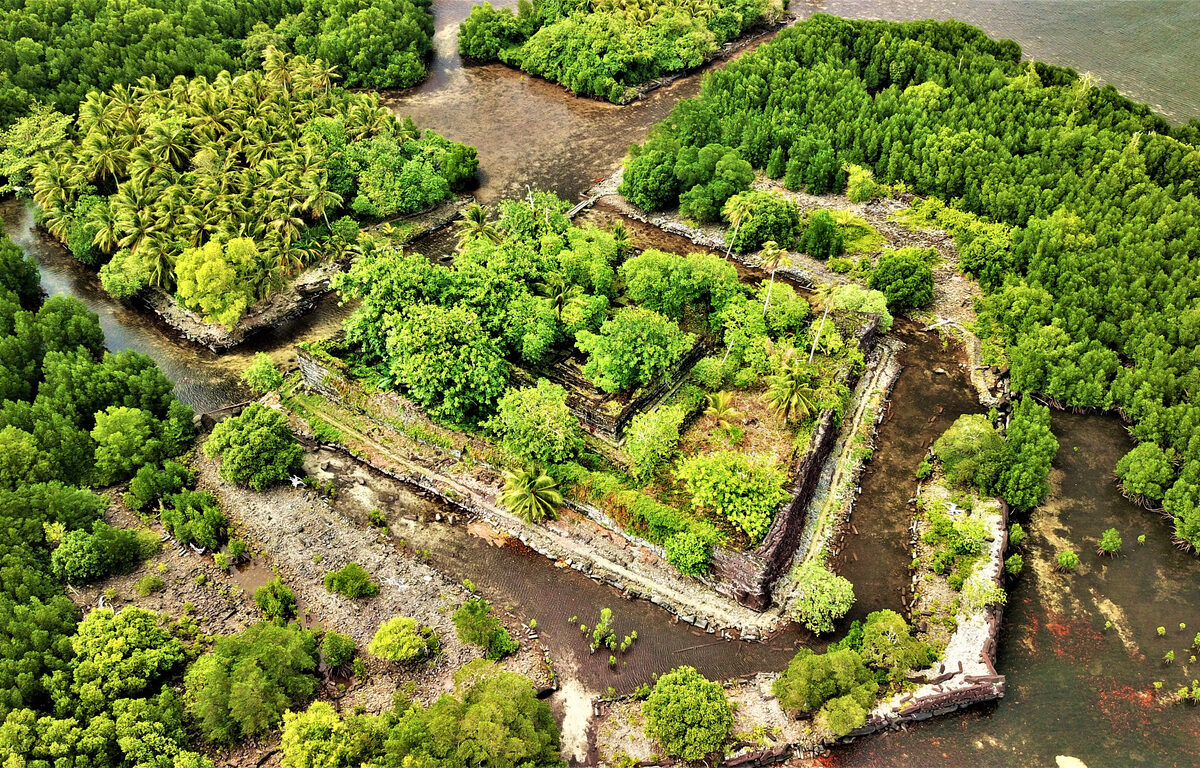12 Ancient Engineering Marvels We Still Can’t Fully Explain
- Gail Stewart
- April 30, 2025
 Getty Images
Getty ImagesFrom the moment humans began stacking stone, they’ve been dreaming bigger, bolder, and more ingeniously than most of us give them credit for. While many ancient structures have been studied and catalogued, some still resist tidy explanations. These aren’t your usual pyramids-and-Stonehenge entries. We’re talking about feats of engineering so advanced, so unexpected, or so downright puzzling that even the sharpest modern minds are still debating how they were built—or why. And the deeper we look, the more these structures seem to ask questions we still can’t answer. Here are ancient engineering marvels that continue to baffle, intrigue, and refuse to give up all their secrets.
1. The Coral Castle (Florida, USA)
Though it’s not ancient in the strict sense, Coral Castle deserves its place here because it channels the spirit—and mysteries—of ancient megalithic building. Constructed single-handedly by Latvian-American eccentric Edward Leedskalnin between 1923 and 1951, Coral Castle features coral rock blocks weighing up to 25 tonnes. He cut, carved, and assembled the massive stones alone, without the help of machinery or even witnesses.
Leedskalnin worked mostly at night and left no clear explanation of how he achieved this, only cryptic remarks about understanding the laws of leverage and magnetism. The precision of the construction and the sheer strength required remain an unsolved puzzle. Theories range from conventional mechanical genius to the wildly speculative—including claims of magnetic manipulation.
2. Derinkuyu Underground City (Turkey)
Beneath the arid plains of Cappadocia lies a sprawling, multi-level underground metropolis capable of sheltering 20,000 people. Derinkuyu, with its living quarters, food stores, churches, and even a school, spreads over 18 levels, some descending more than 60 metres into the earth.
The city features complex ventilation shafts, deep water wells, and rolling stone doors designed for defence. Believed to have been started by the Phrygians and expanded by early Christians fleeing persecution, Derinkuyu wasn’t just dug—it was engineered with foresight and precision. How ancient builders achieved this with only basic tools is still unclear, especially when it comes to structural stability, airflow, and water access over such depths.
3. Baalbek Trilithon (Lebanon)
In Lebanon’s Bekaa Valley, the ancient Roman ruins of Baalbek sit atop foundations far older. The site’s most enigmatic feature is the Trilithon—three colossal stone blocks, each weighing over 800 tonnes, forming part of the Temple of Jupiter’s platform.
Nearby lies an even larger stone—the Stone of the Pregnant Woman—estimated at over 1,000 tonnes, still in the quarry. Moving and placing such stones with tight-fitting precision would challenge even modern cranes. Roman engineering was impressive, but no contemporary records explain how they lifted or aligned these megaliths. Theories abound, from ramps and levers to ancient pulleys or entirely lost techniques.
4. The Sacsayhuamán Walls (Peru)
Just outside Cusco, Peru, sits a fortress that defies explanation. The walls of Sacsayhuamán are constructed from enormous stones—some over 100 tonnes—shaped and fitted with extraordinary accuracy. The stones lock together in irregular patterns, without mortar, and have withstood centuries of earthquakes.
The stonework features tight joints, unusual angles, and curves that follow the natural contours of the landscape. The Incas didn’t have iron tools or wheeled transport, making the quarrying, moving, and assembly of these stones a feat that modern engineers still admire and struggle to replicate.
5. Nan Madol (Micronesia)
Floating off the eastern shore of Pohnpei Island, Nan Madol is an ancient city built atop a coral reef. More than 90 man-made islets are interconnected by tidal canals, earning it the nickname “Venice of the Pacific.” Constructed using massive prismatic basalt columns, some weighing several tonnes, the city was once the ceremonial and political centre of the Saudeleur Dynasty.
The basalt was quarried from the opposite side of the island and transported across open water without any surviving record of how it was done. Even more confounding is the sheer number of basalt logs—estimated at 750,000—that were moved and stacked into this labyrinthine marvel.
6. Göbekli Tepe (Turkey)
Discovered in the 1990s and dated to around 9600 BCE, Göbekli Tepe has completely reshaped our understanding of prehistoric civilisation. The massive stone enclosures and carved T-shaped pillars, some weighing 20 tonnes, were built by people who supposedly lacked both agriculture and permanent dwellings.
This site predates Stonehenge by several millennia, yet its scale and symbolic complexity suggest a structured, cooperative society capable of large-scale planning and construction. Even more curious is that the site was deliberately buried around 8000 BCE, for reasons we still don’t understand.
7. The Longyou Caves (China)
Found by accident in 1992, the Longyou Caves in Zhejiang Province are a network of over 20 hand-carved chambers, each up to 30 metres deep. The caves were carved from sandstone with walls and ceilings covered in uniform chisel marks, but no historical records or legends mention their creation.
Archaeologists have yet to determine why they were built, how they avoided collapse, or how such massive earthworks were carried out with apparent coordination but no surviving documentation. The scale of effort required—and the absence of any trace of debris—has added to the mystery.
8. The Stone Spheres of Costa Rica
Dotting the jungles of the Diquís Delta are hundreds of perfectly spherical stones, carved from granite and other hard rocks. Ranging from a few centimetres to over two metres in diameter, some weigh more than 15 tonnes. They were created between 600 and 1000 CE by the Diquís people.
Their function remains unknown. They may have marked important sites, symbolised celestial bodies, or represented status—but with many moved from their original settings, it’s hard to say. What remains striking is the extraordinary symmetry achieved without metal tools or modern measuring instruments.
9. The Uffington White Horse (England)
Visible only from the sky or distant hillsides, this stylised 110-metre-long figure of a galloping horse is carved into the chalk hills of Oxfordshire. Dating to around 1000 BCE, the Uffington White Horse is far older and more refined than other chalk figures in Britain.
Maintained through periodic re-chalking by local communities, its precise design suggests a planned layout, likely using surveying methods or even primitive geometry. Its function may have been religious, territorial, or astronomical—but despite centuries of scholarship, no one knows for certain.
10. The Hypogeum of Ħal-Saflieni (Malta)
Carved from solid limestone over 5,000 years ago, this underground complex spans three levels and features elaborate chambers, doorways, and corridors. One room in particular—the Oracle Chamber—has unique acoustic properties that amplify low frequencies throughout the structure.
Used for both burial and ritual, the Hypogeum reflects extraordinary planning and craftsmanship. The engineering required to excavate, ventilate, and stabilise the complex—without iron tools—is extraordinary. The decision to design acoustics for ceremonial purposes adds yet another layer of mystery.
11. Pumapunku (Bolivia)
Part of the greater Tiwanaku complex, Pumapunku is famous for its finely cut stone blocks—many of which are shaped like interlocking puzzle pieces. Made from andesite and diorite, the stones are so hard they can only be shaped today with diamond tools.
The precision of the joins, the symmetry of the cuts, and the apparent modularity of construction all suggest techniques far ahead of their time. Some researchers believe the site had to be constructed with a highly developed, if now-lost, engineering tradition.
12. The Submerged City of Dwarka (India)
Off the coast of Gujarat, sonar mapping and underwater exploration have revealed geometric stone structures—walls, roads, and platforms—beneath the sea. Some believe this could be the mythological city of Dwarka, associated with the god Krishna.
While the exact dating is still debated, the site suggests human settlement patterns and urban planning far earlier than previously assumed for the region. The challenge of constructing on a coastline that eventually submerged, and the unanswered questions about who built it and why, make Dwarka a site of enduring mystery.
From vast underground cities to impossible megaliths and submerged ruins, these ancient engineering feats challenge our assumptions about what early humans were capable of. They’re not just reminders of human ingenuity—they’re provocations. How much have we forgotten? What skills were lost to time? And what other marvels are still buried beneath earth and sea, waiting to be rediscovered? These sites aren’t just relics—they’re questions carved in stone, daring us to answer.



